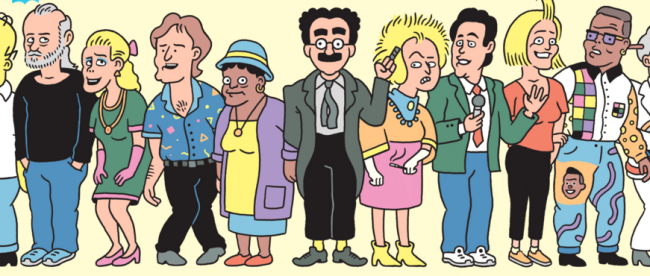The Weekender: February 12, 2016

1) “Toilets, Not Tarps: What People Really Need After a Natural Disaster” (Bloomberg Businessweek, 11 minutes, December 2015). It’s not really about toilets, although it’s amazing how many people in the world don’t have one — this sounds like a joke, but we really take plumbing for granted. Anyway, this story is about infrastructure, and an NGO called the Dzi Foundation which, in Nepal, build it.
It’s Oct. 23, six months after a magnitude 7.8 earthquake and a 7.3 aftershock killed almost 9,000 Nepalis and left hundreds of thousands homeless. Relief arrived in a surge, with international aid organizations delivering bags of rice, pallets of bottled water, and emergency tarps. Now comes the harder, longer work of reconstruction in the rugged Himalayan foothills. I’ve joined Ayers, 38, a former logger from New Hampshire, to visit rebuilding projects in some of the remote villages where Dzi works. For the past eight years the organization has been striving to develop robust agricultural economies in 70 communities that have otherwise relied on subsistence farming, remittance labor in the Middle East, and portering for mountain climbers. It draws on financial backing from companies like Vitol, a Dutch oil services provider, and wealthy individuals such as Pete Ricketts, the governor of Nebraska and former chief operating officer of Ameritrade. Now these villages need relief—the quake destroyed 31 schools, and Dzi’s surveys indicate that about half of the region’s houses are uninhabitable. But here’s just the first of many challenges: All materials for the reconstruction, from cement to rebar, must travel over roads like the one we’re on.
Our ultimate destination is Sotang, a market town in the impoverished Solukhumbu district, with stops in seven other remote villages. The plan for now is to start rebuilding some schools. The plan for the future is to develop the kind of prosperity that can make a community more resilient when it’s confronted by natural disaster. “It’s easy to drop off some tarps and call it good,” Ayers says. “I think this is more effective.”
2) Now I Know, the book: If you’ve read it, please consider leaving a review on Amazon — I’m at 149 as of this writing and would really like to hit 150. If you haven’t, consider giving it a try. The first 149 reviewers have, on average, given it 4.7 stars (and that includes this 2-star one, which probably doesn’t apply to you).
3) “The Dark Underside of the Show-Dog World” (Vanity Fair, 15 minutes, February 2016). There may or may not have been a murder (of a dog) at a dog show, because dog shows are apparently brutally competitive. What else goes on in the world of high-stakes dog breeding?
It was after the show, back home in Belgium, that Jagger began having such difficulty breathing that his alarmed owners called a veterinarian. By the time he got there it was too late: Jagger had collapsed and died. An autopsy found shocking evidence in the dog’s gastrointestinal tract: pieces of beef neatly folded with poison inside.
4) “The 100 Jokes That Shaped Modern Comedy” (Vulture, 95 minutes, January 2015). Yes, 95 minutes. But really, that’s only about one minute per joke. Lots of bad words, a few dozen videos (so it’s longer than 95 minutes in that regard), but a really, really great collection.
WeekenderAdUnits
5) “A Brief History of the Bathroom” (Porch, 19 minutes, March 2015). The title really says it all, but I found the quoted part below really interesting. (Oh, and I don’t know why I’ve referenced bathrooms or toilets multiple times in this Weekender, sometimes that just happens.)
England in the Middle Ages favored steam baths and bathing, and many social activities took place in and around the “stews,” or baths. Men and women could bath together (however women may have covered their hair for decency). Dining, grooming and other social activities were common scenes at the stew. Contrary to modern belief, the medieval people in England were quite clean. But like many trends, public bathing in England fell out of favor at the end of the 16th century as the bagnios/bagno, or baths became associated with brothels. Another reason public bathing was falling out of favor was that the sudden increase in population was making it difficult to find clean water. As waves of disease hit Europe in the Middle Ages (the most famous being the Bubonic Plague otherwise known as the Black Death in 1347), it was believed that bathing, and exposing the body to water, may contribute to early death.
6) “One Day at Panda Express” (Eater, 13 minutes, October 2015). Panda Express is a shopping mall food court Chinese food chain (which now exists outside of malls). There are more than 1,700 franchises and they do a total of $2 billion in business, selling a lot of orange chicken, fried rice, and beef with broccoli. Eater documented a day in the life of one franchise in a really neat way, tracking the dollars earned as the day progressed and recapping the stats at the end. It’s really a great read, and wow do they use a lot of cabbage.
Have a great weekend!
